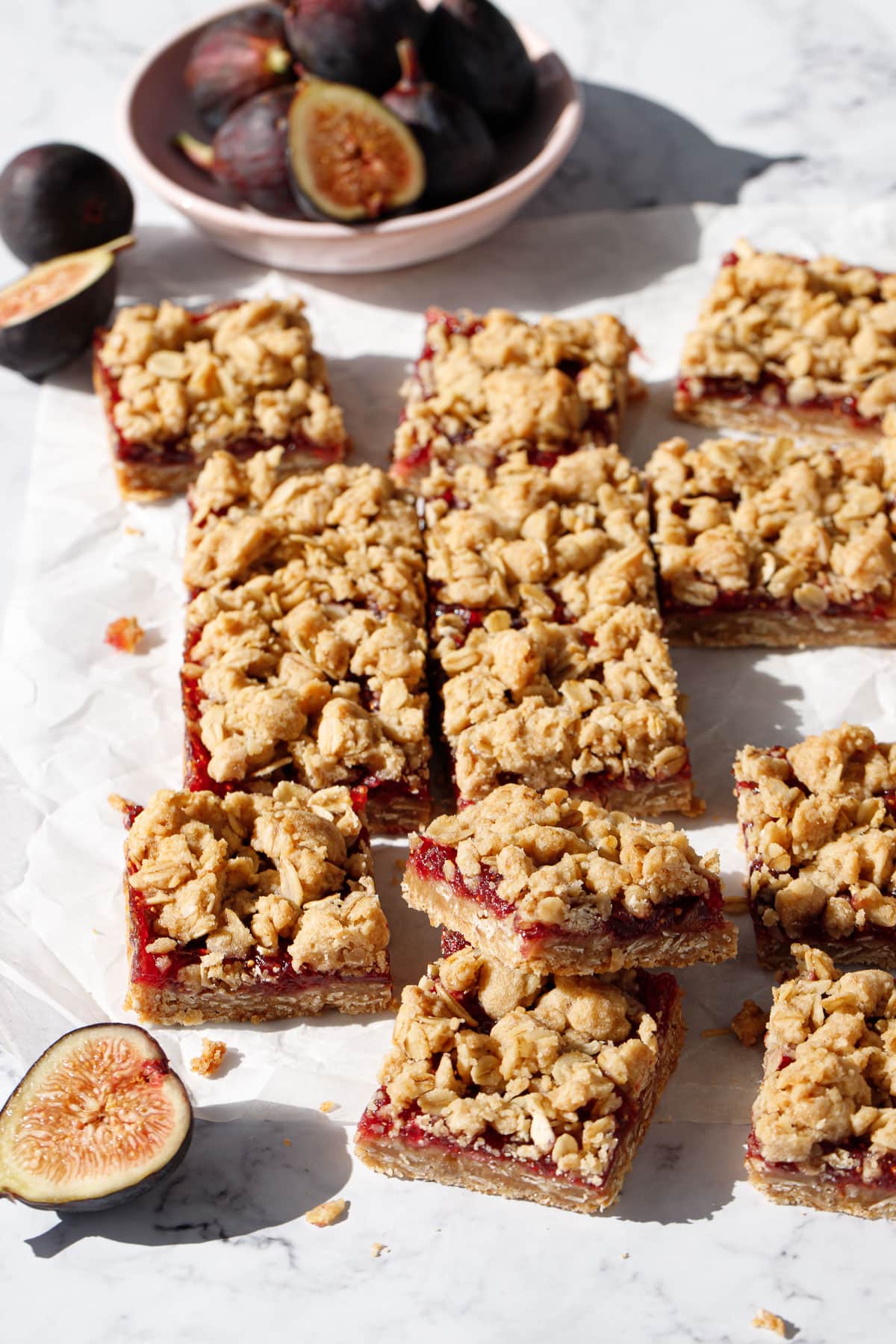Cell-based meat and seafood, Calabrian chili peppers, and a bevy of beverages are among the 2024 trend predictions set forward by Specialty Food Association’s Trendspotter Panel which is made up of professionals from diverse segments of the specialty food world.
“Maximizing pleasure and minimizing stress, as one Trendspotter put it, encapsulates the panel’s picks for 2024,” said Denise Purcell, VP, resource development, for SFA of the eight trends. “Maximizing pleasure—in the forms of simple ingredients to global flavors to upscaling the everyday—and minimizing stress, whether that means slowing down, seeking convenience or value, helping to address environmental worries, or finding ways to boost health and mood, are all reflected in the emerging and continuing trends we expect to impact store shelves and restaurant menus in the coming year.”
SFA’s Trendspotters are Patsy Ramirez-Arroyo, food & sustainability consultant; Melanie Bartelme, Mintel; Osei Blackett, chef/owner Ariapita and Everything Oxtail; Nicole Brisson, executive chef, Brezza and Bar Zazu; Mikel Cirkus, Foresight & Trenz, dsm-firmenich; Jenn de la Vega, Put A Egg On It; Jonathan Deutsch, Drexel University; Thomas Joseph, Martha Stewart and Sur La Table; Chala June, writer; Hannah Rogers, Foresight & Trenz, dsm-firmenich; Stan Sagner, founder, We Work for Food, LLC; Emily Schildt, founder, Pop Up Grocer; Kantha Shelke, Ph.D., CFS, IFT Fellow, Corvus Blue LLC; Kimberly Lord Stewart, food and health content specialist; V. Sheree Williams, The Global Food & Drink Initiative, Cuisine Noir.
They prognosticate the following trends:
• A bevy of beverages. Beverages are in the spotlight. Though a smaller segment than food, in many recent years beverage sales have grown at a faster pace, according to SFA’s State of the Specialty Food Industry research, fueled by innovation. “The coming year will boom with sophisticated tasting single-serve, non-alcoholic fizzy and non-fizzy drinks; and coffees, teas, and broths with functional ingredients for an additional boost of energy, clarity, focus, or calming effect,” said Selke. Expect minimal, if any, added sugar, salt, or synthetics as well as tropical flavors and herbs and botanicals from all over the world.
• Cell-based meat and seafood. Cell-based options will gain popularity in 2024 due to their sustainable and ethical production methods, addressing environmental and animal welfare concerns while offering a familiar taste experience to consumers, said Ramirez-Arroyo. Some trailblazing companies are creating the world’s first cultured burger and focusing on providing sustainable alternatives to traditional seafood products.
In a related trend, while last year the panel saw nontraditional seafood trending, a shift toward the growth of plant-based seafood overall is coming in 2024, with more companies working to perfect animal-free products that accurately capture the flavors and textures of seafood. “Historically, this has been a challenge for producers as the textures are particularly hard to mimic,” said June. “But with advancing technology more brands are going to take a swing at it.”
• Peach. Some tried-and-true flavors never die but cycle back into the spotlight when the timing is right to reinvent or re-evaluate unexplored facets of that particular flavor. In the coming year, peach as a flavor and ingredient will excite consumers with some new variations and re-interpretation, said the panel. While increasingly used in traditional categories like jams and teas, peach is also showing up in condiments, sometimes offsetting another growing trend of chili peppers, and in baked goods like the 2023 SFA sofi Awards New Product winner, Peach-Lavender Bundtlet from Lily Maude’s.
• Calabrian chili peppers. Chiles continue to trend but the market has crested on Sriracha and Gochujang so marketers are eager for the next thing to capture imaginations and tastebuds. Calabrian chili peppers are appearing in both conventional and slightly unconventional products: pasta sauce, hot sauce, cured meats, snacks, relish, hot honey. “As most peppers are of Asian or Latin origins, these offer a cultural alternative to what has become commonplace,” said Sagner. “Additionally, Calabrian peppers have a bright flavor that is quite appealing and lends itself well to a variety of dishes.”
• Tahini. Awareness of tahini as a flavor in its own right is a relatively fast-growing phenomenon. “It’s been increasingly viewed and applied outside of the Middle Eastern specialty lens, and being married to foods and beverages that are served in a more mainstream or non-adjacent capacity,” said Cirkus and Rogers. Noted examples are tahini milk shakes and coffees, cookies, and pastries featuring tahini popping up in metropolitan areas like New York, San Francisco, and Philadelphia.
• Soup. Soup recipes on TikTok are so popular the segment has been dubbed SoupTok, spurred on by the pandemic-era rise of the soup girlie and viral line, “Gorgeous, gorgeous girls love soup.” Unlike some TikTok food trends, soup has staying power. “Universal, warm, convenient. Never really goes out of style,” said de La Vega. Expect to see more soups, broths, and soup starters and mixes on shelves and menus.
• Black Sesame, ube, and milk tea. Three iconic Asian flavors will follow the path of matcha and continue to enter a more familiar sphere among makers and consumers. These flavors are cropping up in new and unexpected formats, such as the milk-tea–filled donut and ube hot chocolate from Bear Donut in the Penn District of NYC. “Ube’s fantastic color gives a pop of intrigue for consumers, and its flavor paired with creamier formats makes it irresistible,” said Cirkus and Rogers. The milk tea flavor lends itself well to baked goods but also salty and sweet snacks like Tochi’s Black Milk Tea Popcorn, which also contains black sesame. “Black sesame is especially one to watch, as it plays in a space of offering novelty and deliciousness across formats,” they added.
• Value. Consumers are watching their finances and value will be the name of the game. As people may need to make choices about how they spend their money, “brands that will successfully engage them will show shoppers what their products bring to the table. This may be versatile uses, low-stress flavor building or longer shelf life (yes, longer shelf life!),” said Bartelme. These attributes can help show consumers that these products are "worth" the cost.
CONTINUING TRENDS
Global flavor exploration. Not only is experimentation with flavors from around the world ongoing from a taste perspective, but consumers are open to richer cultural experiences from food, said the Trendspotters. “I see a continued increase in what I call heritage tradition foods, more small producers [around the globe] will continue to bring forth family recipes that are rich in flavors and stories that connect them to home and culture,” said Williams. As people explore, they are becoming more deeply aware of more obscure regional ingredients and recipes. “In all corners of the U.S., restaurants featuring lesser-known cuisines and specific dishes within those cuisines will prime consumers to realize that it's actually quite easy and accessible to try new things,” said Bartelme. “People are understanding that cuisines are not monolithic,” added Sagner. “This trend is particularly evident in Asian packaged products (cooking sauces, seasonings, beverages, condiments, packaged noodles, etc.) that are appealing to both second generation and non-Asian customers. As for countries and regions in the forefront of U.S. consumer discovery? “Exploring African pantry items will also continue as brands educate the Western palate to African flavors and ingredients,” said June.
Elevated convenience. Consumers will continue to look for ways to make the most of the flavor and quality of their food and drink while becoming more open to using shortcuts that can help them easily achieve this. “There will be a newfound appreciation for, and celebration of, mixes, sauces, starters and more that consumers once chose to hide from their family and friends,” said Bartelme. Convenience extends beyond at-home meal prep. On-the-go, convenience will also continue to drive innovation with lives back to busy schedules. This holds for food and drinks, said Williams.
Upscaling the everyday. While inflationary pressures may have taken a bite out of restaurant dining, they continue to make the everyday at home a bit more special. Ingredients like high-end truffle salts, finishing oils, spice blends, and cultured butters elevate simple dinners at home to restaurant-style flavorful indulgences, said Deutsch. One example is charcuterie boards, said Ramirez-Arroyo. They are everywhere, and their popularity is expected to endure in 2024, owing to their captivating visual appeal, cost-effectiveness, wide array of shareable spreads that foster communal dining, adaptability to diverse dietary preferences and ingredients, and alignment with the increasing demand for elevated, artisanal food displays at gatherings, whether casual or upscale.
Environmental impact. As important as food is its environmental impact. Sustainability, carbon footprint, and food waste concerns remain on the minds of a growing number of consumers. “Regenerative, upcycled, and sustainably packaged are not just buzzwords but keywords in consumers' quests to eat well while doing good,” said Deutsch. Expect more focus on regenerative agriculture as those in food industries “focus on solutions to combat climate change,” said Williams.
Mushrooms are mushrooming. Mushrooms for taste, mushrooms for texture, mushrooms for health benefits. “People will discover mushrooms in every food and beverage category and product developers will find ways to weave in ancient wisdom into new craveable food formats,” said Shelke. In beverages, in particular, previous priorities have been caffeination, but now it's more [mushrooms to address] relaxation, mood, and brain health. Drinks to wind down when the world is moving too fast,” said de la Vega. “Less of a focus on gut flora but more on skincare and the mind.”
These trends, and more, will be at the 2024 Winter Fancy Food Show in Las Vegas.
Related: Fresh Thyme Market Predicts 2024 Trends; Nonalcoholic Beverage Boom Prevails
from Food Trends https://ift.tt/GCp3S7J










